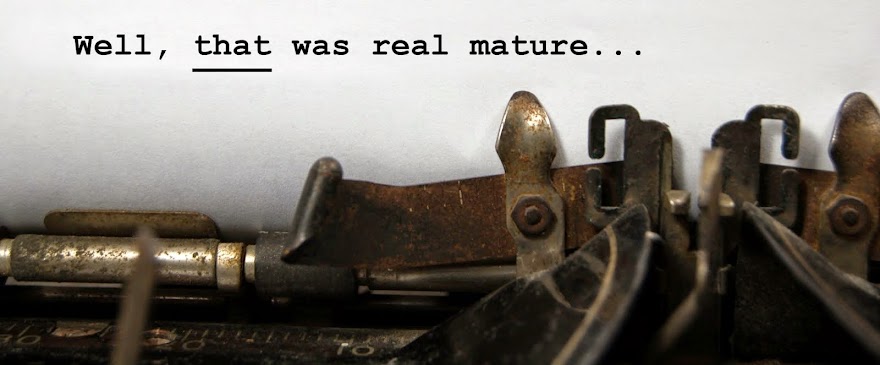FIRST A BRIEF ANNOUNCEMENT: New story starts next week!
We are going to deviate a little from our initial plan. Initially, our fourth short story, "Ashes of the Immortals" was going to start next week. However, we have decided to put it off a little while. Instead next week we will start our first long term story: "Jigsaw World." "Jigsaw World" was initially planned as a long running, mature readers, print book, but Matt and I have decided we do not want to wait for a publisher to pick it up, so with some minor tweaks (to make it more of a PG book instead of a mature readers book) it will start going up next week. The first complete story of "Jigsaw World" was plotted to be approximately 88 pages (four 22 page chapters). The current plan is to present each page Chapter 1 straight through at one a week, then take a break and present the 12 page short story "Ashes of the Immortals," then resume "Jigsaw World" with chapter two. Unlike our short stories presented to date, "Jigsaw World" was written and illustrated to be a print book so the pages will be vertical instead of horizontal and will not have the cliffhanger each page. Hopefully this change will not turn anyone off. The longer form style allows us additional time to present a more complicated narrative with more complex characters.
ADVENTURES IN PULP WRITER'S COMMENTARY
FOUR HORSEMEN PAGE
1
http://adventuresinpulp.com/the-four-horsemen-week-1/
The genesis of "Four Horsemen" started at dinner
with Matt one Saturday night. (Actually, that's not true, the seeds existed
earlier but the ball got rolling that night). We were trying to decide on our
fourth story for "season one" of adventuresinpulp.com. We were well
under way with my creations of "Dick Ruby and the Case of the Little Green
Men," and "Hawk and A Handsaw" and I had developed a plot around
one of Matt's ideas (originally titled "Starlight" but now is
underway as "Ashes of the Immortals"). We had a super-hero satire, and
two detective tales one with a noir flavor and another that is sci-fi. Matt and
I both lamented that neither of us were huge fantasy fans. Other than the
occasional Robert E. Howard pulp or Conan comic, my interest in sword and sorcery
was limited to fairly mainstream stuff like Lord of the Rings.
As we paid the bill, Matt dropped the gauntlet.
"You know what that means," Matt said with a glint in his eye (or it
could have been the fish tacos backing up on him). "We have to do a fantasy
style story." The wheels spun as we drove from the restaurant to the
coffee shop. I seized upon an idea that I just could not get to work in the
past and ran it past Matt.
Several years earlier I had an idea for a
sci-fi tale, where scientists on a doomed planet Earth of the future pulled warriors
from the past to fight a desperate battle. It went through several variations
(including a satire that would include Genghis Kahn, Hitler, Jesus and JFK) but
I could never get it to work. I tossed out the basics, stripping the sci-fi
elements from them. Jumping from science to magic is not that big a leap.
Arthur C. Clarke once wrote that "Any sufficiently advanced
technology is indistinguishable from magic." So why not, right?
Matt immediately
jumped in as I explained that we should stick to some specific warrior archetypes. The ideas flew back and forth. We had our basic story idea. I went to
plotting. I knew my twist ending and I wanted to do something unexpected with
the climax.
It
was time to start scripting and I wanted a lot going in:
I
wanted to change up the writing style drastically. With "Dick Ruby" I
used dialogue and first person narration, and with "Hawk and a Handsaw" I used
dialogue solely to tell the story. I knew I wanted to do this one completely
with third person narration and without any dialogue much like the old
"Prince Valiant" strips. But I didn't just want to imitate that
strip, I also wanted to invoke the feeling of a kid's storybook with simple
sentences ("It was a good witch," "it was a blessed kingdom,"
etc.). I also wanted to have a pattern to the pages. Like a song where the
lyrics change but the music is the same. I wanted a rhythm to the images and
the words. I wanted a variety of images and locations (mainly as a "thank
you" to Matt, who had to be feeling claustrophobic drawing so much of
"Hawk and a Handsaw" in the confines of an asylum). Like, I said: I wanted a lot
and all of it was going to be a radical departure. I like to think it has
turned out well, you all can be the judge. When you try something different and take
a creative chance, it can be a tremendous success or a drastic failure.
Page one was pretty simple, we set up our
heroine and the villain and get the plot ball rolling. Matt changed up his art
style for this one. My initial suggestion was going to be to do the hero pose
in color but to do the actual panels in black and white or a sepia tone. As you
can see, Matt decided to go full on color much to my surprise. It looks great
and, once this first page came in, my initial butterflies about the drastic stylistic
change settled some. Matt was clicking right away and there was so much fun
stuff to come, how could it go wrong? I mean, you know, other than me...
 NEW PAGE!
NEW PAGE!


























